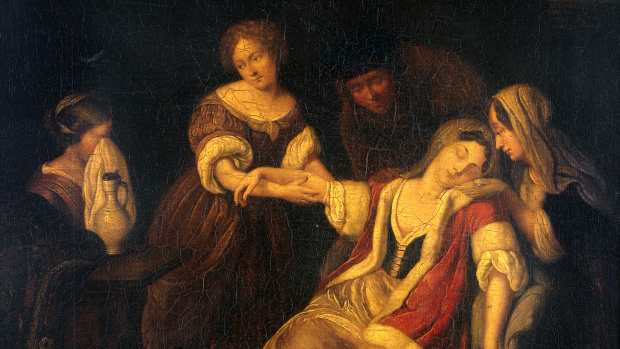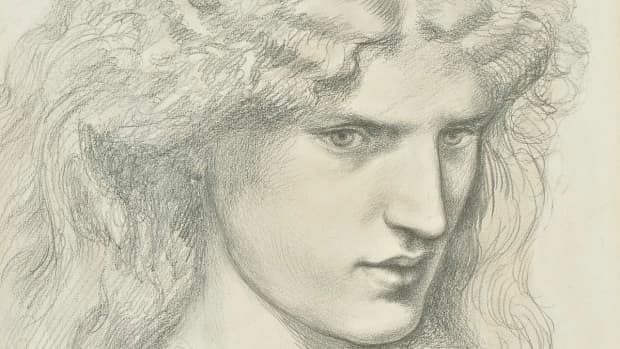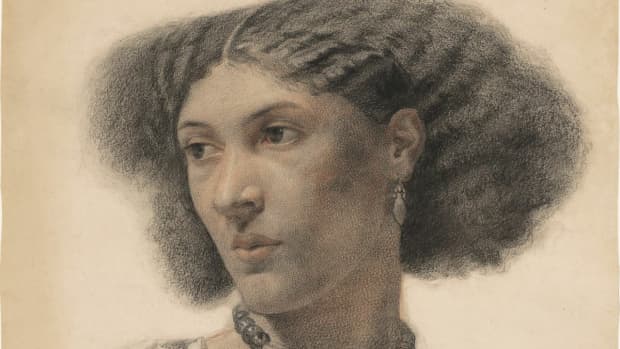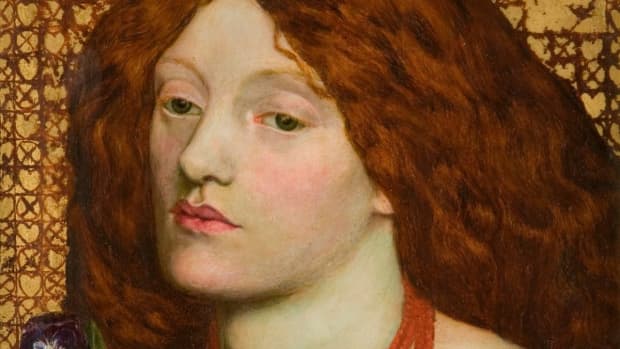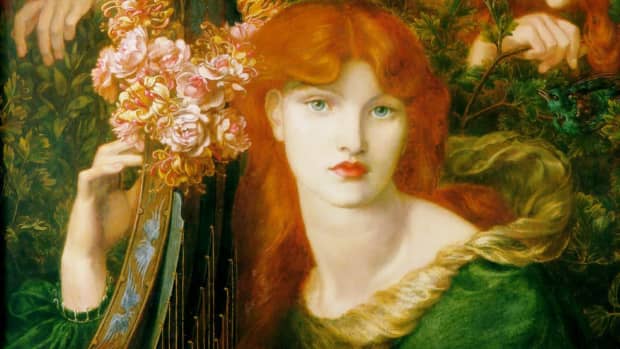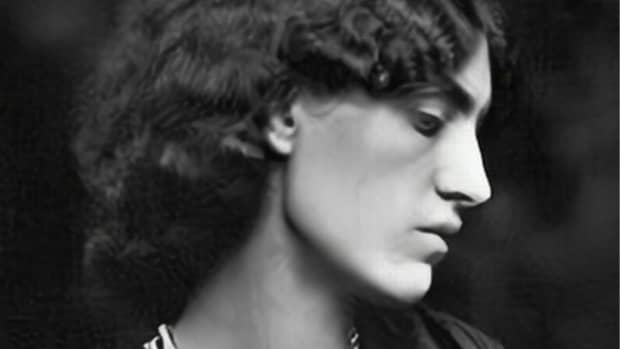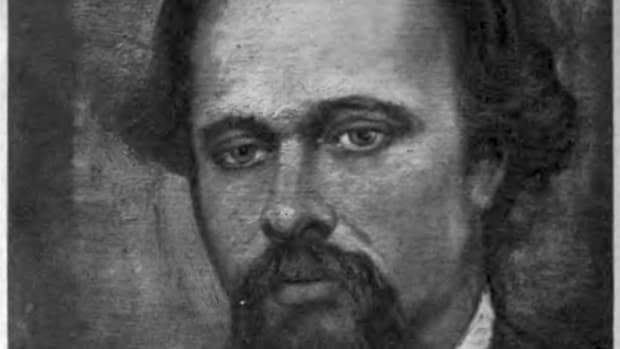The Pre-Raphaelite Art Model: Fanny Cornforth
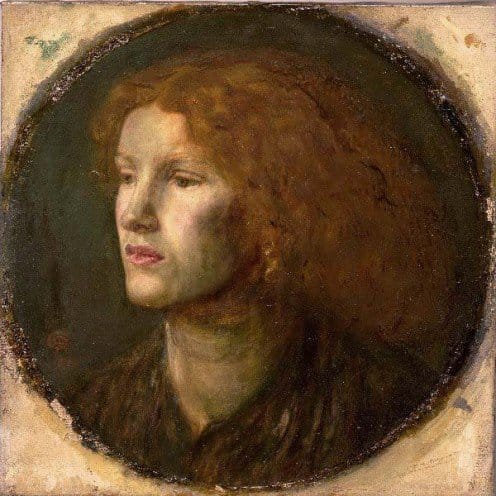
Pre-Raphaelite model Fanny Cornforth circa 1862
Dante Gabriel Rossetti [Public domain], via Wikimedia Commons
Fanny Cornforth's Background
There’s not much information about the identity or origins of Fanny Cornforth until a recent discovery by autobiography writer Kirsty Stonell Walker. Walker uncovered historical records on the woman’s true background and shed light on the early and later years of the Pre-Raphaelite model’s life.
According to Walker, as noted in her book, the art model was born Sarah Cox in 1835 near Steyning, West Sussex, to a hired blacksmith. From an early start in life, she endured an impoverished childhood marked by sickness and sadness. After losing her mother and several siblings, her family moved to where her father found work on the railway and another wife. The predicament left her and her only other surviving sister, Ann, to fend for themselves after he had fallen ill.
An 1851 census shows her working as the only servant at a local boarding house at sixteen. Given this knowledge, the underprivileged girl seemed doomed to live a problematic and dull life. However, if not for one rare fateful day, an outing with her aunt to a coming home celebration for soldiers after the Crimean War, she was spotted by a group of distinguished young gentlemen who, little did she know, were searching for the perfect face.
The life of Fanny Cornforth is forever linked to that of Dante Gabriel Rossetti. Fairly or unfairly, it is his art that defines our impression of her.
— Kirsty Stonell Walker, "Stunner: The Fall and Rise of Fanny Cornforth"
An Opportunity of a Lifetime
Fanny had little hope of advancement in her life as a lowly servant. However, she received an invitation to sit as an artist’s model. Given her limited circumstance, it’s no wonder that the young woman agreed to such an invitation.
The next day, while in the company of her aunt, they visited the Pre-Raphaelite co-founder and artist Dante Gabriel Rossetti, with whom she did not know that she would have a lasting friendship and bond for the rest of her life. Most assume that it was at the behest of her aunt’s fair warning and to protect a reputation withstanding, instead of using her birth-given name, she posed under the guise name of Fanny Cornforth for Rossetti’s trained and talented eye.
Despite Rossetti’s romantic attachment to the sickly Elizabeth Siddal, who was already one of his first models, the artist was smitten by Fanny’s voluptuous charms. Soon she became his obsession. He launched the young woman into the art world’s spotlight as the epitome of a Pre-Raphaelite lover’s dream subject.
Art Modeling Career
During her modeling career, Fanny not only sat for Rossetti in such works as Bocca Baciata and The Blue Bower, but also for other Pre-Raphaelite artists as well. Some of these artists included such distinguished peers as George Price Boyce and Sir Edward Coley Burne-Jones.
Recommended
However, she had a 'commoner’s' background like her art model counterpart Annie Miller, and exhibited a 'layperson crassness' and lacked social decorum compared to her artist employers who bore educated and often high standings. The Oxford art circle had held her in esteem despite her overlooked encumbrances. In time, Fanny grew much older, and the esteemed model fell out of artistry favor, although a warm friendship continued between the two as she carried on as Rossetti’s housekeeper, while he focused on his newest muse, Alexa Wilding.
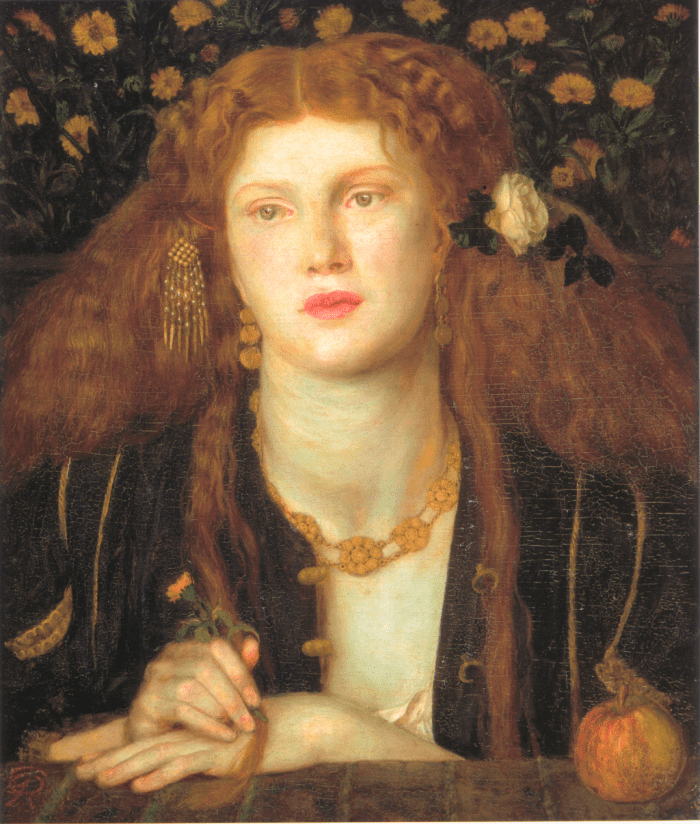
Bocca Baciata (1859) by Dante Gabriel Rossetti. (Model: Fanny Cornforth)
Dante Gabriel Rossetti / Public domain
Dante Gabriel Rossetti's Decline
While modeling, Fanny had married a mechanical engineer by the name of Timothy Huges. The marriage had not lasted, and the relationship ended in divorce. Throughout the years, she continued to work for Rossetti as his housekeeper until the artist’s family intervened because of his failing health. Unable to manage his affairs or care for himself any longer, the artist had to cut strings at his family’s insistence. He could not handle their disapproval over the ill-matched and long-standing relationship. However fragile the separation, he had not abandoned Fanny altogether. Rossetti considered Fanny his responsibility and sold several paintings, some of which she had modeled so he could provide for her safekeeping.
In time, Fanny found work at a local tavern and married its keeper. Although she had remarried and lived a new life, Rossetti often suffered from mental breakdowns and pleaded with Fanny to come back and care for him. And she did, with the approval of her understanding husband. However, she was not present on his trip to Birchington-on-Sea in Kent, where he had passed away in 1882.
Cornforth's Final Years
After Rossetti’s death, Fanny took the heirlooms that Rossetti had given her over the years and opened an art gallery with her husband until her husband’s end in 1891.
At this point in life, Sarah Cox Schlott had long since given up the title of Fanny Cornforth, and with old age came dementia and extended family could no longer care for her debilitating condition.
Placed in a workhouse, the once unforgettable Pre-Raphaelite face remained forgotten. After a few years of residential care, she contracted bronchitis and died of pneumonia in 1909.
Cited Sources & Works
- Maev Kennedy. The Guardian: From Siren to Asylum: the Desperate Last Days of Fanny Cornforth, Rossetti’s Muse
- Kirsty Stonell Walker. Stunner: The Fall and Rise of Fanny Cornforth (Amazon CreateSpace Independent Publishing)
- Kirsty Stonell Walker. Pre-Raphaelite Girl Gang: Fifty Makers, Shakers and Heartbreakers from the Victorian Era – Unicorn Publishing Group, February 15, 2020
- The Box Files: Stories From the Steyning Museum Archives. Fanny Cornforth
This content is accurate and true to the best of the author’s knowledge and is not meant to substitute for formal and individualized advice from a qualified professional.

